Your typical curse is little more than a temporary setback in D&D, thanks to spells such as Remove Curse. But what happens when players encounter a lingering portent of doom that can’t be waved away with a third-level spell slot?
Van Richten’s Guide to Ravenloft offers optional rules to level up your curses, making even Greater Restoration little more than a temporary solution. These rules offer a clear format for creating new curses and can come in handy when you want to subvert expectations and make a particular curse more of a plot point than an inconvenience.
Components of curses
The curses in Van Richten’s Guide to Ravenloft are a far cry from the simple maladies conferred via the Bestow Curse spell, and should be applied sparingly. Player characters who defile an ancient tomb, kill an innocent person, or commit another heinous crime could suffer a more powerful curse. You might also use this type of curse as the crux of an adventure.
Curses have the following three components:
- Pronouncement: The pronouncement is the foreshadowing of the curse, and it can be a nebulous threat or a direct warning. For instance, a non-player character might idly mention a rumor about a quickling living in a nearby forest who possesses shapeshifting boots that grant their wearer extraordinary speed — at a cost. Or, characters might battle gnoll fangs of Yeenoghu who warn that if they are struck down, a terrible curse from the demon lord himself will warp the party’s minds with bloodlust. Both are pronouncements inviting player characters to test their luck and tempt punishment.
- Burden: The burden is the effect of the curse. The adventurer who steals the quickling’s boots might be unable to remove them, suffering 1 level of exhaustion for each day spent wearing the shoes. A party who defeats the gnolls might find themselves afflicted with an unyielding desire to consume humanoid flesh unless they succeed on a Charisma saving throw every hour.
- Resolution: The resolution is the means by which the curse can be abated. Perhaps the adventurer needs to return to the quickling, beg for forgiveness, and then race against it and win in order to remove the boots. Maybe the party cursed by Yeenoghu’s unceasing hunger must sacrifice a series of victims — one for every gnoll they vanquished — in order to stop their terrible urges. Above all, resolutions should be arduous processes that test players and propel the roleplaying experience forward. In that vein, if a cursed character dies, their burden will cease only until they are resurrected.
What about Remove Curse and Greater Restoration?
The more powerful curses presented in Van Richten’s Guide to Ravenloft can be temporarily subdued. Remove Curse can suppress a burden for one hour, while Greater Restoration can suppress it until the victim completes a long rest.
The curse of Irisshali
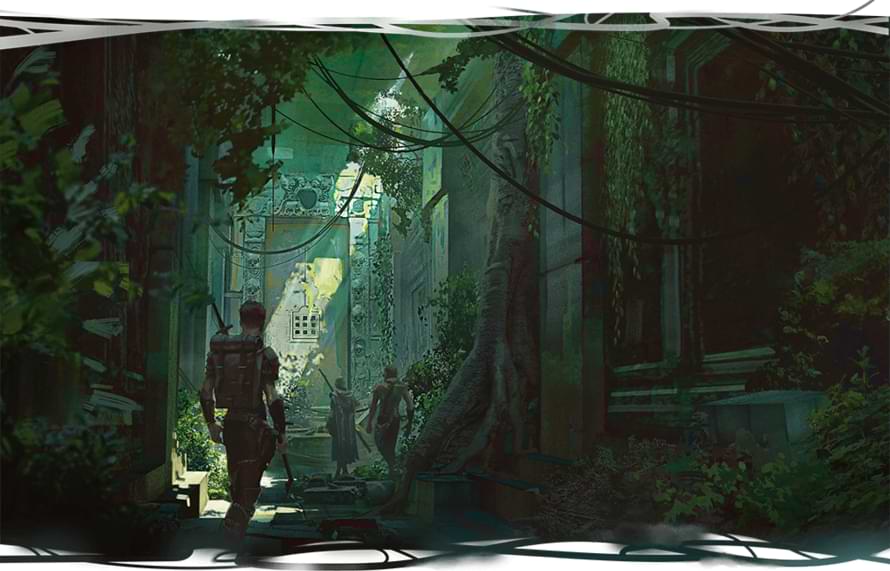
The rogue turned comfortably on her plush pillow, dreaming of the gem-laden scepters that she had found in the ruins — and all the coin that they would make her on the black market. Her snores came in loud bursts, masking the sound of something large slithering into her tent.
If the rogue had awakened in that moment, she would have found a creature composed entirely of shimmering gemstones, with an upper body that appeared as a woman and a lower half that resembled a giant serpent. It slithered up onto her bed.
“Sssstealers sssshall ssssuffer in their ssssleep,” the horror hissed, its tail slowly wrapping around the rogue.
The rogue woke as it suddenly became hard to breathe. Her eyes widened as she saw the creature before her — sinister, scintillating, iridescent death.
The curse of Irisshali is a homebrew creation that follows the three rules above. It affects player characters who delve into the ruins of a sprawling city that was once home to a sect of yuan-ti who were at odds with their more callous and caste-bound people. This splinter civilization was ruled by Queen Yaotl, a yuan-ti pureblood who rebelled against her station in life and valued the bonds that could be made with humans. After rallying a legion of followers, she led her people to a remote jungle and founded a home for like-minded yuan-ti. She named her city Irisshali, which can be translated into Common as Iridescence.
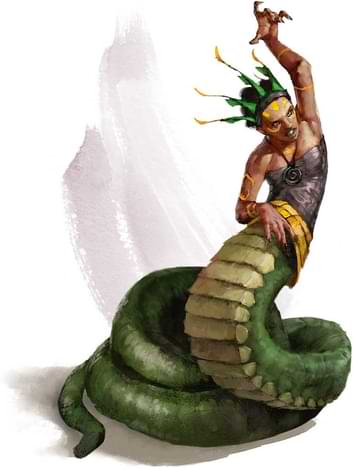 Irisshali was once a stronghold that shunned many of the practices that have come to define the snakefolk, including torture and sacrifice. The city was known for its vast collection of gems, which were forged into jewelry, weapons, and other finery used for trade with human settlements.
Irisshali was once a stronghold that shunned many of the practices that have come to define the snakefolk, including torture and sacrifice. The city was known for its vast collection of gems, which were forged into jewelry, weapons, and other finery used for trade with human settlements.
Unfortunately, Irisshali became embroiled in battles with other yuan-ti civilizations. Many of Yaotl’s more zealous brethren considered her views abominable and sought to ransack her city. To keep spies from pillaging her home, a hardened Yaotl dove into long-forgotten yuan-ti magic to create a series of cursed sigils in her later years.
Yet, it was neither the battles nor assassination attempts that ended Irisshali.
After nearly a century of Yaotl’s rule, an earthquake plunged the city into a crevasse. Recent tremors have opened up the canyon that holds the city’s ruins, and the site has become a popular destination for treasure hunters hoping to uncover the gems that lie in its remains. Little do they know that Queen Yaotl’s curses still remain!
Irisshali's Curse
- Pronouncement: Yaotl placed a thousand sigils in Irisshali’s treasure rooms and gem-cutting chambers. Each sigil forms the image of a snake wrapped around a massive gemstone and is inscribed with the following phrase, written in the yuan-ti tongue: “Stealers shall suffer when they sleep.” The magic of these sigils has maintained over the years, despite damage from the earthquake.
- Burden: Any character who pilfers a gem-encrusted treasure and takes it more than 20 miles from Irisshali is subjected to the curse. When they take their next long rest, a yuan-ti nightmare speaker will manifest in an unoccupied space 20 feet away, awaken the character to repeat the warning found in the city, and attack. Defeating the yuan-ti causes it to harmlessly vanish — it does nothing to abate the curse. The creature reappears each long rest the player character takes until the curse is broken. Depending on the value of the stolen treasure, more than one yuan-ti nightmare speaker may appear.
- Resolution: The yuan-ti nightmare speakers will only permanently disappear if the stolen treasure is returned to Irisshali’s ruins. Passing the treasures onto a third party will not undo the curse, and will in fact cause the new possessor to become a victim of the yuan-ti nightmare speakers as well. Alternatively, characters with powerful magic at their disposal might be able to find the bones of Queen Yaotl in Irisshali’s ruins, resurrect her, and intimidate her into removing the curse — though it’s highly doubtful that the proud yuan-ti queen will acquiesce!
Making curses fun at your table
Curses found in Van Richten's Guide to Ravenloft are designed to challenge players, but there’s a fine line between challenging and frustrating. To keep a curse-filled quest fun, consider the following pointers:
- Make the curse the focus of the adventure: A party of cursed characters on a frantic quest to resolve their burdens is the foundation for a thrilling campaign. To use the curse of Irrishali as an example, perhaps the adventure could start in media res, as a dungeon crawl with player characters diving into the depths of the ruined city and swiping as much treasure as possible in traditional hack-and-slash fashion. The middle of the campaign could then transition to the curse’s consequences, as horrified players are confronted by swarms of yuan-ti nightmare speakers every evening. The campaign’s finale could be an intriguing reversal of dungeon crawl stereotypes, where the player characters are forced to retrace their steps and return the treasures that they took.
- Balance the curse’s effects by adding a benefit: Player characters facing harsh burdens can benefit from a power boost to make their trials more bearable. For instance, the gem treasures of Irrishali could be magical items that they can use to fight off the yuan-ti nightmare speakers that plague them. Similarly, if a curse bestows lycanthropy, characters might benefit from the impressive damage immunities that werecreatures acquire, albeit at the cost of suffering an alignment change or becoming an anathema to society. Some player characters might even choose to endure the burden of a curse like lycanthropy in favor of the awesome power it provides, deepening characterization around the gaming table.
- Let non-player characters be cursed instead: Maybe the player characters aren’t the ones who are cursed. They might instead be bodyguards to a cursed non-player character who is attempting to find a cure. This approach can be a great way to introduce more powerful curses at your table.
However you decide to use the curses of Van Richten’s Guide to Ravenloft, remember that these ominous afflictions should drive the narrative of your game forward. They can add weight to the warnings given by non-player characters, too, and make for meaningful consequences when player character commit egregious crimes or challenge ancient and powerful forces that dwell in your world.
Van Richten's Guide to Ravenloft is available to purchase on D&D Beyond! It offers two new subclasses, lineages, all-new monsters, and more! Master-tier subscribers can share content they purchase in the marketplace with players in their campaigns.
Jeremy Blum (@PixelGrotto) is a journalist, gaming blogger, comic book aficionado, and fan of all forms of storytelling who rolled his first polyhedral dice while living in Hong Kong in 2017. Since then, he's never looked back and loves roleplaying games for the chance to tell the tales that have been swirling in his head since childhood.








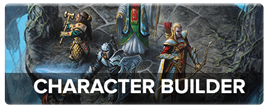
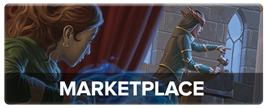
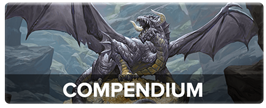
-
View User Profile
-
Send Message
Posted May 28, 2021My apologies, it appears that I have incorrectly assumed that DDB was a product of WotC. However my argument of the obsoletion of the app still stands. If supporting content creators and services is the real purpose behind the extra 30$ then I am happy to pay. Considering this reply was the only place I have heard that this is where the money is going, I’m not entirely ready to believe it. All I know is that there are several ways the problem of double charging can be fixed, as long as it is viewed as a problem. If DDB decides to keep it that way, I don’t care. They just need to stop presenting it as a problem without a solution. Still, I am very sorry for any unfair arguments made from the misconception that DDB and WotC are the same company.
-
View User Profile
-
Send Message
Posted May 29, 2021i'm the weird DM who first (that i know of - 1985 or so) came up with a destabilized ancestral curse that had to be cured via a unique means in every individual afflicted with it. The PC turning into a small rustic cabin on the nights of a full moon, a were-house.
-
View User Profile
-
Send Message
Posted May 29, 2021Can I steal that?
-
View User Profile
-
Send Message
Posted May 30, 2021Pirates of the Caribbean and that stolen Aztec treasure that cursed those carrying or having stolen their treasure to effectively become undead that becomes very obvious during the night!
Required they make a blood sacrifice before returning the item stolen before it can be removed.
I think there's more to that, but that's what this article makes me think about.
-
View User Profile
-
Send Message
Posted May 30, 2021cooooooooollllllllllll...
-
View User Profile
-
Send Message
Posted Jun 1, 2021absolutely you can. i don't think the player would mind at all. It was an interesting curse, and each member of the family had a variant. His sister (forgot the name, it's been a few years after all) turned into a magical polearm (but only during nights of the full moon) - i think it was a bec-de-corbin.
-
View User Profile
-
Send Message
Posted Jun 2, 2021Remember DnD Beyond is NOT WOTC. They cannot and will not let a D&D Beyond purchase count toward a hardcover purchase.
If you buy a copy of a book, you don't get tickets to the movie based on it for free. If you want two copies of a book, you buy two copies. There is nothing unusual, unreasonable, or problematic about paying for an indexed, searchable online copy of material that has been integrated into a character builder, encounter builder, and searchable database.
DnD Beyond is a business, not a fan blog. Sure, they may be banging the product drum a little hard, but they're doing it in a useful way. This curses article is plenty useful even if you're not using Van Richten's guide.
I'd thought all this 'But I don't wanna buy two copies of the same material!' thing was settled years ago.
-
View User Profile
-
Send Message
Posted Jun 4, 2021Curse an NPC to be a Loup Garou and they have to kill a beloved (pacifist if you want it to hurt) NPC
-
View User Profile
-
Send Message
Posted Jun 4, 2021BioWare implemented a way to make curses permanent in Neverwinter Nights. If your character leveled up while cursed, it became permanent. It wasn't mentioned anywhere, and was just left for players to find out the hard way. Was a pretty cool feature. May be something to consider for when cursed players use down time or level up while under the influence.
-
View User Profile
-
Send Message
Posted Jun 4, 2021Hate to be that guy, but dndbeyond, now owned by Fandom after it was bought from Twitch/Amazon, only works closely with WOTC.
Thus the whole "redeem code" would business might prove fatal in terms of monetization for Dndbeyond, in addition to cutting down on revenue for WOTC. However, the digital prices of books here can go down with sales and coupons, so if you are ever interested in purchasing new content/another book for Dungeons & Dragons 5e, I highly recommend waiting for a sale.
-
View User Profile
-
Send Message
Posted Jun 4, 2021What explanation is given for why spells like Remove Curse do not work?
-
View User Profile
-
Send Message
Posted Jun 5, 2021I would guess that these curses are simply too powerful to be removed by ordinary magic. It would be better if Remove Curse made this explicit (something like "all common curses are ended and greater curses are suppressed for 1 hour"), but carving out an exception is better than "we can't make a curse relevant to the story because it will just be removed with a 3rd-level spell".
-
View User Profile
-
Send Message
Posted Jun 7, 2021Agreed, good to have it legitimised a bit more in an official source as well. Would have liked to see an official explanation as to why as well as 'too powerful' feels a bit 'house rule' to me but is what I'd go with as well.
-
View User Profile
-
Send Message
Posted Jun 10, 2021The funniest thing is that I am running a campaign named Cursed for a year now, and it is about strong, near-incurable curses. Over the course of this year I was homebrewing and looking through forums to find the perfect and powerful curse template. Now I read this and, ah, this is good, my now-5th-level characters would definitely be terrified! And I love it!
-
View User Profile
-
Send Message
Posted Aug 15, 2024Curse of No Magic: Spells above 3rd level can’t be cast by the cursed. Can only be cured by greater restoration, which is above third level.
Curse of Blindness and deafness: After each long rest you either have the blinded or deafened condition. It can only be cured by receiving the other condition.
Curse of stealing goblins: During every long rest, an invisible goblin appears and steals one of your items.
Curse of Gluttony: Any food you see you must eat immediately or die.